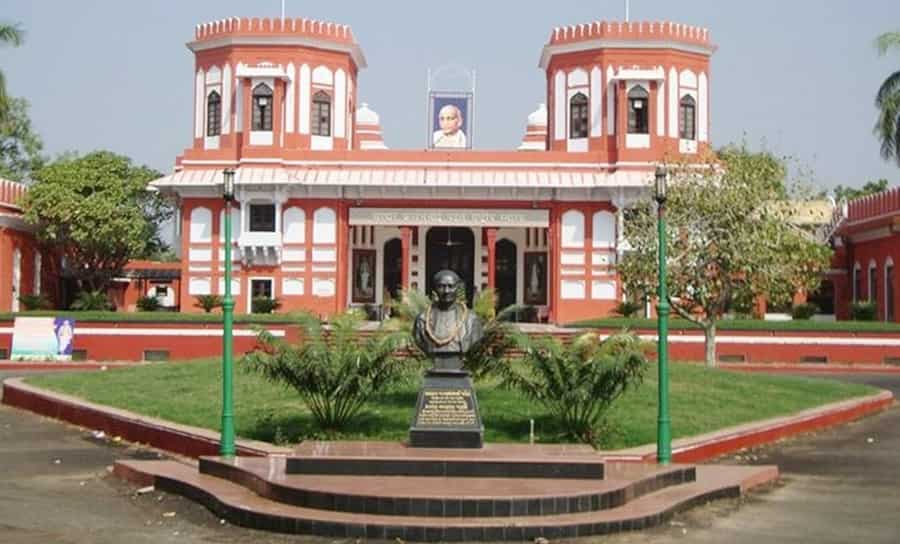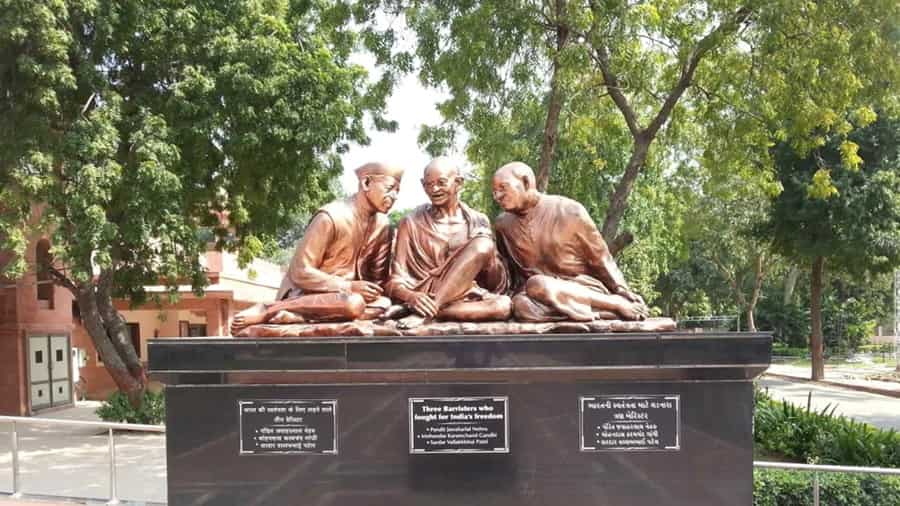Located in the heart of Ahmedabad, the Sardar Vallabhbhai Patel National Museum stands as a testament to the indomitable spirit and leadership of one of India’s foremost political figures, Sardar Vallabhbhai Patel. The museum, dedicated to preserving and showcasing the life and contributions of this iconic leader, offers visitors a profound journey through India’s struggle for independence and its subsequent journey towards unity and integration.
Museum Timings:
- Open from 9:30 AM to 5:00 PM every day of the week, except Mondays.
3D Show Timings:
- Experience the 3D show from 7:00 PM to 7:45 PM, exclusively on Saturdays and Sundays.
Entry Fees:
- Museum: Rs. 20 for Adults, Rs. 10 for Children
- 3D Show: Rs. 30 for Adults, Rs. 10 for Children

Introduction to Sardar Vallabhbhai Patel: The Iron Man of India
Before delving into the museum’s rich exhibits, it is essential to understand the pivotal role played by Sardar Vallabhbhai Patel in shaping the destiny of India. Known as the “Iron Man of India,” Patel was a key figure in the Indian independence movement. Born on October 31, 1875, in Nadiad, Gujarat, Patel’s political acumen and leadership skills earned him the respect and admiration of his contemporaries.
Historical Background
The museum is situated at the same location as Moti Shahi Mahal, a palace commissioned by the Mughal Emperor Shahjahan between 1618 and 1622. Noteworthy for its opulent ornamentation, the palace incorporated the Shahibaug gardens, adorned with a rich variety of noble cypresses, cedars, palms, sandals, and cassias. Fruit trees, including mango and tamarind, further enhanced the scenic beauty of the gardens.
Over time, the palace transitioned through various phases of ownership and usage. Initially a symbol of Mughal architectural grandeur, the palace eventually fell under British control and underwent a transformation into a government building during the colonial period. In the post-independence era, the structure assumed the role of Raj Bhavan, serving as the official residence of the Governor of Gujarat from 1960 to 1978.
A significant turning point occurred on 7 March 1980, marking the centennial birth anniversary of Sardar Vallabhbhai Patel. In honor of this iconic leader, the building was officially designated as a memorial for Sardar Vallabhbhai Patel. This transformation underscored the historical significance of the location, solidifying its identity as the site dedicated to preserving and celebrating the legacy of one of India’s eminent political figures.
- Must Read: Most Famous Museums in Gujarat
Inside the Museum
Within the confines of the museum, a rich collection of artifacts belonging to Sardar Vallabhbhai Patel is on display, complemented by an array of images depicting various stages of his illustrious life. The museum boasts two multimedia halls that host interactive exhibits, utilizing experiential techniques to illuminate different facets of Sardar Vallabhbhai’s life and contributions. For the convenience of visitors, information is disseminated in three languages: Hindi, Gujarati, and English.
A standout feature of the museum is its groundbreaking 3D sound, light, and laser show, a pioneering spectacle in India. This immersive presentation takes spectators on a journey through the pivotal moments of Indian independence, evoking deep respect and admiration for the freedom fighters and martyrs. The integration of 3D building mapping projection techniques and laser projection captivates visitors, enhanced by compelling sound and light effects and a narrated voice that collectively crafts an extraordinary experience.
The exhibits extend beyond the singular focus on Sardar Vallabhbhai Patel, delving into the broader narrative of India’s struggle for independence during his era. They encompass glimpses into life during the Vedic period, the nuances of the Mughal era, the subjugation of Indians by the British, and the relentless pursuit of freedom culminating in the Indian independence movement.
A particularly striking display within the museum is the Indian national flag, designed by the Indian National Congress in 1930, showcased in its full splendor. Portraits of Sardar Patel, along with his family and comrades from the days of the Indian Independence Movement, adorn the walls. Many schools in Ahmedabad organize guided tours of this museum, offering students an enlightening exploration into the life and legacy of Sardar Vallabhbhai Patel.
- Also Read: plan your visit to Ahmedabad
Integration of Princely States
One of Patel’s most significant contributions was the integration of over 500 princely states into the Indian Union after independence. The museum dedicates a substantial section to this monumental task, showcasing the diplomatic finesse and statesmanship that Patel employed to unify a fragmented nation. Letters, speeches, and multimedia presentations provide a comprehensive understanding of the challenges and triumphs associated with this integration process.

Personal Artifacts and Memorabilia
To humanize the political giant, the museum displays a collection of personal artifacts and memorabilia that once belonged to Sardar Vallabhbhai Patel. Visitors can marvel at his personal belongings, including clothing, accessories, and everyday items, offering an intimate glimpse into the life of a leader whose actions reverberated far beyond the political arena.
Interactive Exhibits
Recognizing the importance of interactive learning experiences, the Sardar Vallabhbhai Patel National Museum incorporates multimedia presentations, touch-screen displays, and immersive exhibits. These interactive elements engage visitors of all ages, making the museum not only a repository of historical knowledge but also a dynamic and engaging educational space.
Legacy Beyond Politics
While Patel’s political contributions are undeniably monumental, the museum extends its narrative to explore his impact on nation-building. From economic policies to educational reforms, the exhibits shed light on Patel’s multifaceted approach to shaping the socio-economic landscape of post-independence India.
Educational Programs and Outreach
In line with its commitment to education and enlightenment, the Sardar Vallabhbhai Patel National Museum organizes a variety of educational programs and outreach activities. School visits, workshops, and lectures contribute to the museum’s role as a hub for learning and inspiration, ensuring that Patel’s legacy continues to resonate with future generations.
Best Time to Visit Ahmedabad
For optimal sightseeing conditions, plan your visit to Ahmedabad between November and February when the weather is pleasant. The months from March to May tend to be hot, while June to October brings the monsoon season, offering another favorable window to explore the city.
How to Reach
Ahmedabad is well-connected by air and train services to major cities. Easily reach the memorial using public transport, cabs, or personal vehicles. The memorial is situated on Sardar Vallabhbhai Patel Airport Road in Ahmedabad. Consider booking a private cab from reputable car rental companies for a comfortable exploration of Ahmedabad’s popular sights during your stay in the city.
Conclusion
In conclusion, the Sardar Vallabhbhai Patel National Museum in Ahmedabad stands as a timeless tribute to a visionary leader whose impact on India’s history is immeasurable. The museum not only preserves the memory of Sardar Vallabhbhai Patel but also serves as a beacon of inspiration for all those who seek to understand the journey of a nation from colonial subjugation to a united, democratic republic. As visitors walk through the halls of this museum, they are not just witnesses to history; they become part of the ongoing narrative of a nation’s resilience and triumph.
Popular Tour Packages
